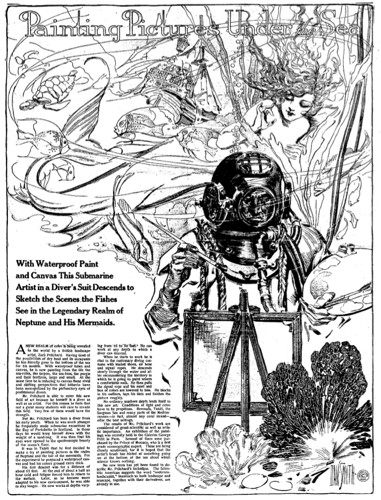August 2012
August 31, 2012
New Use For A Water Bottle
How cool is that!
Posted By: Alex - Fri Aug 31, 2012 -
Comments (5)
Category: Food
Masonic Handshake Revealed
The Freemasons are famous for having a series of hand signals by means of which their members can identify each other wherever they may happen to be in the world. Now you too can pretend to be a Freemason. The secret is that, first, you need to memorize a series of hand signals all of which indicate different days of the week. The signals also require that you have pockets in your clothes (or that you have clothes on, period... so these won't work in a nudist colony):Monday sign: left hand in left pocket, thumb out, pointing to the right side.
Tuesday sign: right hand in right waistcoat pocket, with thumb out, pointing left.
Wednesday sign: the reverse—left hand in left waistcoat pocket, with thumb out, pointing right.
Thursday sign: right hand in right coat pocket, with thumb and forefinger out, pointing downwards.
Friday sign: exactly opposite—for right, read left.
Saturday sign: putting the first three fingers of the right hand to that part of the right eyebrow next the ear, and so drawing it along till the 3rd finger touches the nose.
Note that you also need to be wearing a waistcoat! Now for the secret greeting. When a Brother meets a Brother he first has to give the signs of the two preceding days, and then the other Brother returns the 7th or Saturday sign. And that's it!
Unfortunately, these signs probably won't work today. The info comes from Secrets of the Freemasons Revealed by a Disgusted Brother, published in 1759. According to Wikipedia, the Freemasons periodically change their secret signals, in order to keep them secret. Nowadays, you may also be required to produce some kind of certificate, or paperwork, to prove your Freemason membership.
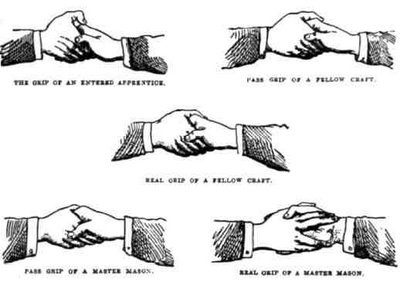
Posted By: Alex - Fri Aug 31, 2012 -
Comments (8)
Category: Clubs, Fraternities and Other Self-selecting Organizations
Follies of the Mad Men #188

Subtext: our arcane, byzantine loan policies are as horrifying and deadly as this nausea-inducing hybrid nightmare creature we chose as our new mascot.
Posted By: Paul - Fri Aug 31, 2012 -
Comments (7)
Category: Animals, Business, Advertising, Products, Money, Fictional Monsters
August 30, 2012
Who Is This Man

Who is this good looking fellow? First, he is famous. Second, some here at WU may know him. Third, he is very talented in his field. I found this picture while web surfing and thought I'd share. Guesses in extended.
Posted By: Alex - Thu Aug 30, 2012 -
Comments (9)
Category:
Creative Destruction
"A short film inspired by EDWARD SCISSORHANDS..."
Curse your soul to hell, Tim Burton!
Posted By: Paul - Thu Aug 30, 2012 -
Comments (3)
Category: Ineptness, Crudity, Talentlessness, Kitsch, and Bad Art, Movies, Avant Garde, Performance Art, Dance
August 29, 2012
Helicopter for Kids
I want one of these in my backyard! From the Lewiston Morning Tribune, Nov 9, 1968:
Posted By: Alex - Wed Aug 29, 2012 -
Comments (7)
Category: Inventions
August 28, 2012
You Found What??

What do you think the $63,000 item the boy found is? Find out at the at the link.
Posted By: Alex - Tue Aug 28, 2012 -
Comments (8)
Category:
The Underwater Art of Zarh Pritchard
Zarh H. Pritchard (1866-1956) is a little-remembered artistic pioneer of the 20th century. (There's not even a wikipedia page about him!) His claim to fame is that he was the first artist to paint underwater.Pritchard would descend to the ocean floor in a diving suit and then paint using waterproof paints on a lambskin canvas soaked in oil. An article in the Fort Wayne Journal Gazette (June 18, 1922) provides more details about the process:
His first descent was for a distance of about 65 feet. At the end of about a half an hour cold and fatigue forced him to return to the surface. Later, as he became more adapted to his new environment, he was able to stay longer. He now works at depths varying from 16 to 50 feet. He can work at any depth to which a diver can descend.
When he starts to work he is clad in the customary diving costume with leaded shoes, air hose and signal ropes. He descends slowly through the water and after reconnoitering the territory in which he is going to paint selects a comfortable rock. He then pulls the signal rope and his easel and box of colors are lowered to him. He blocks in his outlines, lays his tints and finishes the picture roughly.
Some of Pritchard's underwater works are below. They sold quite well. The Prince of Monaco, who was a respected oceanographer in addition to being royalty, was a big fan and bought many of them. Read more about Pritchard here.
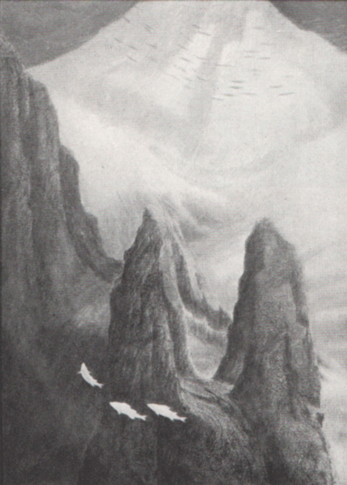
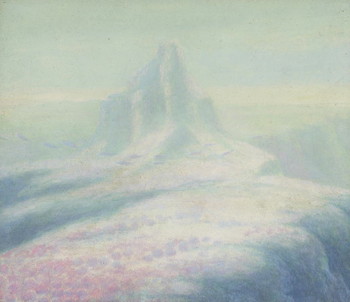
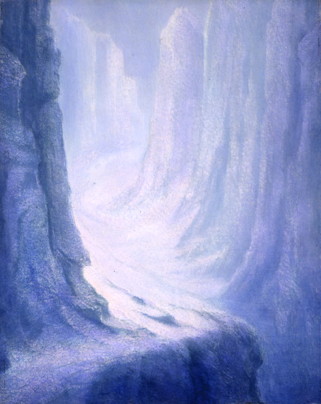
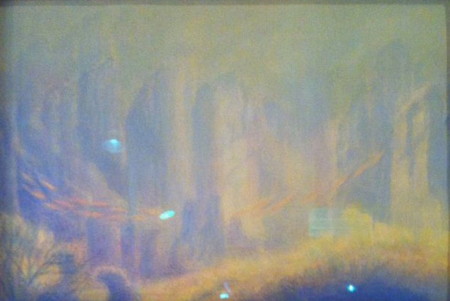
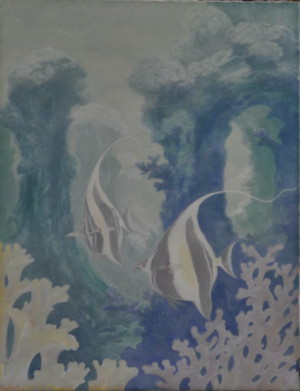
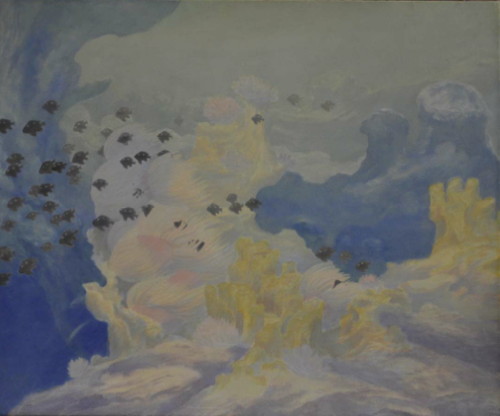
Posted By: Alex - Tue Aug 28, 2012 -
Comments (4)
Category: Art, Oceans and Maritime Pursuits
Sh*tty Jobs Can Be Yours!
Apparently not a Monty Python skit.
Posted By: Paul - Tue Aug 28, 2012 -
Comments (11)
Category: Bombast, Bloviation and Pretentiousness, Business, Hygiene, Excrement, Propaganda, Thought Control and Brainwashing, Slavery, Bondage and Indenture, Sleaze and Sleazeballs, Stupidity
August 27, 2012
Dimensions
Dimensions by Bernard Longpré, National Film Board of Canada
Ostensibly a primer in spatial awareness for kids, this drug-addled escapade is really an elaborate allegory for sexual tension. The geeky male's inability to physically connect with, mate with, or ultimately please the attractive female. Watch, and see if you don't agree.
Posted By: Paul - Mon Aug 27, 2012 -
Comments (3)
Category: Confusion, Misunderstanding, and Incomprehension, Drugs, Geeks, Nerds and Pointdexters, Sexuality, Stupidity, Surrealism, 1960s
| Get WU Posts by Email | |
|---|---|

| Who We Are |
|---|
| Alex Boese Alex is the creator and curator of the Museum of Hoaxes. He's also the author of various weird, non-fiction books such as Elephants on Acid. Paul Di Filippo Paul has been paid to put weird ideas into fictional form for over thirty years, in his career as a noted science fiction writer. He has recently begun blogging on many curious topics with three fellow writers at The Inferior 4+1. Chuck Shepherd Chuck is the purveyor of News of the Weird, the syndicated column which for decades has set the gold-standard for reporting on oddities and the bizarre. Our banner was drawn by the legendary underground cartoonist Rick Altergott. Contact Us |


